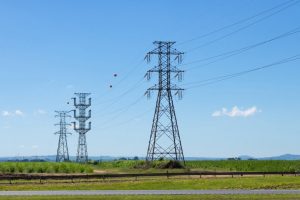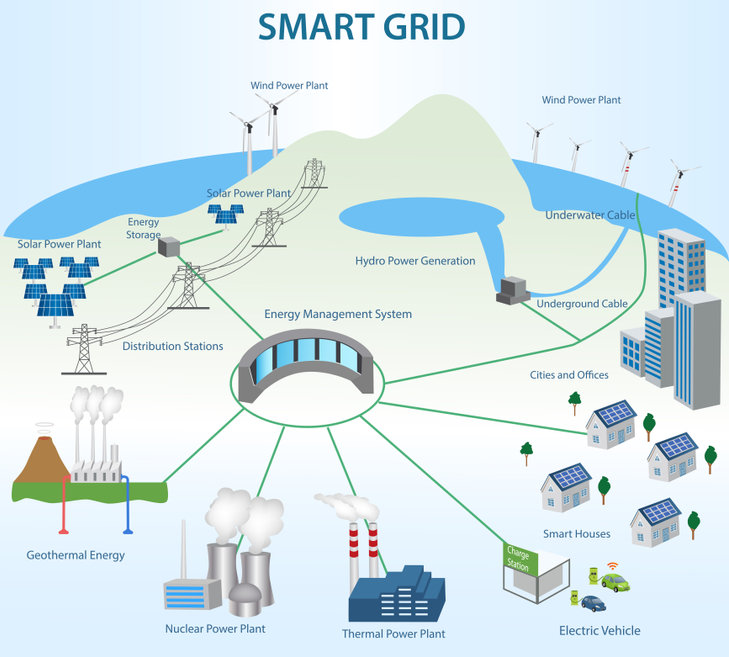CLICK HERE TO DOWNLOAD ACTIVITY 1
CLICK HERE TO SUBMIT ACTIVITY 1
Purpose
- Teams will create their team’s name and decide on team roles. These roles will be used throughout the rest of the project, so it is important to be intentional in which team members take on each role
- Teams will read the background information about Artificial Intelligence (AI) and smart grids and how they can help in natural disasters. Be sure to understand the key terms given at the beginning of the reading, this will help your understanding moving forward. Teams should use this background reading to learn what AI is, how smart power grids differ from traditional power grids, the advantages of smart power grids, and how smart power grids aid areas before and after a storm.
Assigning Team Roles
Decide on a team name and write it in the space above. Your team will use this name to identify all contest submissions, so make it good! You will submit this on the online submission survey for activity 1.
Next, determine team roles. All group members are equal participants in the design process. Everyone has a voice and will share ideas no matter the role. Read the descriptions below, and as a group, decide who will take on what role. You will submit the roles on the online submission survey for activity 1.
- Facilitator – organizes the group, ensures all voices and ideas are heard during work, including their own
- Presenter – leads and coordinates construction of the design proposal presentation
- Editor – reviews and submits all activities online for the design contest, ensures the documents are completed in full
- Designer – leads the group discussions in designing the power grids in Scribble Maps
Identify which team member is taking the role each role. [First Last]
- Facilitator: _________________
- Presenter: _________________
- Editor: ____________________
- Designer: __________________
Read the background information below to learn about smart grids and how they can help in natural disasters
After Completion:
- meet with your team’s mentor to check your work and make changes as needed.
- Have the editor submit completed activity 1 here: https://ufl.qualtrics.com/jfe/form/SV_3wwsZbxwqu39mK2
Background Reading
Copyright: https://www.123rf.com/profile_aln23′>aln23</a>
Key Terms
Power plants – industrial electricity generators, traditionally from coal or natural gas
Loads – electricity consumers such as homes and businesses
Transmission lines – conductive cables that can transport energy throughout a state
Distribution lines – conductive cables that transport energy throughout neighborhoods
Transformers – increases (step-up) or decreases (step-down) the amount of power that is transmitted
Substations – areas that contain transformers to control power before it is distributed to the loads
What is “Artificial Intelligence”?
“It is the science and engineering of making intelligent machines, especially intelligent computer programs. It is related to the similar task of using computers to understand human intelligence, but AI does not have to confine itself to methods that are biologically observable.” John McCarthy, 2004
Simply put, AI is the ability of a computer to do tasks that humans could also do. However, AI can also be seen as a field, which combines computer science and powerful datasets, to enable problem-solving. Artificial Intelligence has become very popular in recent years and is being implemented all around us. However, there is currently a massive effort to utilize AI to solve more complex problems.
First, let’s look at some examples of AI that you might come into contact with in your everyday life: [1]
- Personal Assistants: AI-powered personal assistants, such as Siri, Google Assistant and Amazon Alexa, are integrated into smartphones, smart speakers and other devices and can perform a wide range of tasks, from setting reminders and sending messages to playing music and controlling smart home devices.
- Social media: Social media apps, such as TikTok, Instagram, and Snapchat, utilize AI to examine user preferences and behavior, suggest pertinent materials, and customize the user experience, Moreover, AI systems can eliminate harmful content such as hate speech.
- Customer service: Businesses are increasingly using virtual assistants and chatbots powered by AI to offer 24/7 customer service. Natural language processing is used by these chatbots to comprehend consumer questions and deliver relevant responses.
- Autonomous vehicles: AI is used in self-driving cars, trucks, and buses to perceive their environment, map out routes and make judgements while driving. This technology can lessen collisions, gridlock in the streets, and pollutants. For instance, Tesla uses AI to power its self-driving cars, which can navigate roads, highways, and parking lots without human intervention.
Now, lets take a look at some of the more complex AI initiatives which will transform the world around us:
- Healthcare: Physicians are already using AI as a tool to help them read and interpret tests.AI algorithms can analyze vast amounts of data, identify patterns, and predict. In the future, AI may analyze and diagnose a person based on medical tests and records, body imaging, pathology, test, and other lab tests. [2]
- Education: There are many apps, such as Duolingo, which combine human expertise and AI to provide educational content. In the future, AI models could be used in school to track the progress of each individual student and generate teaching methods/content tailored to them. [3]
- Power & Electricity: Continue reading below to learn about the ways in which smart power grids leverage AI algorithms and analytics to optimize distribution, improve reliability, and enable more effective energy management.
What is “the grid”?
“The grid” refers to the traditional electric grid built in the 390s, still in use today. Since then, there have been many additions and improvements; however, the overall design has remained the same. Electricity moves in one direction from power plants to loads through a network of transmission and distribution lines, transformers, and substations.[4, 5]
In this system, power demands are estimated, and utility companies have no way to monitor energy flow once it leaves the plant.[6] Employees physically visit loads every month to read usage meters. We will soon outgrow this system with increasing electricity demands and reliance on technology. This is where the smart power grid comes in.
What is a smart power grid? How is it different from a traditional power grid?
A smart power grid consists of new technology, including controls, smart meters, computers, and automated systems to better provide for current and future energy needs. These changes allow for real-time two-way communication and management throughout the network.[4, 5]
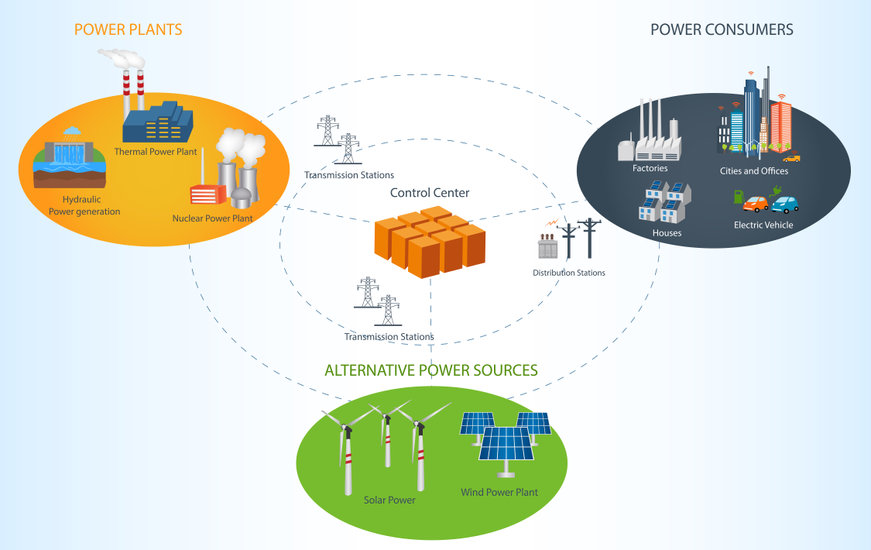 Copyright: https://www.123rf.com/profile_monicaodo’>monicaodo</a>
Copyright: https://www.123rf.com/profile_monicaodo’>monicaodo</a>
Advantages of smart grids over the traditional power grid:
- Better management and control
- Traditionally, utilities estimate how much power is needed to supply a home, and an outage isn’t discovered until someone calls to report it. Smart grids allow both consumers and producers to monitor and control usage in real-time remotely. Thus, loads receive the exact amount of power needed, and outages are reported immediately.[4-7]
- Integration of advanced energy production and use
- Infrastructure to support electric vehicles and renewable energy is developed to support more sustainable energy. Due to the two-way connection, buildings with solar cells can put excess energy back into the grid for distribution.[4, 5]
- Less centralized, more distributed
- Traditional grids are centered around a few main power plants, while smart grids have a greater power supply distribution by utilizing consumer-owned generators and renewable energy sources. This minimizes the effect of an outage at a single plant and improves reliability.[4, 6]
- Lower energy cost
- All the above advantages lower the cost of energy by simplifying utility management, reducing downtime from outages, and improving efficiency. Moving toward sustainable energy sources also reduces the impact of energy production on the environment.[4, 5, 7, 8]
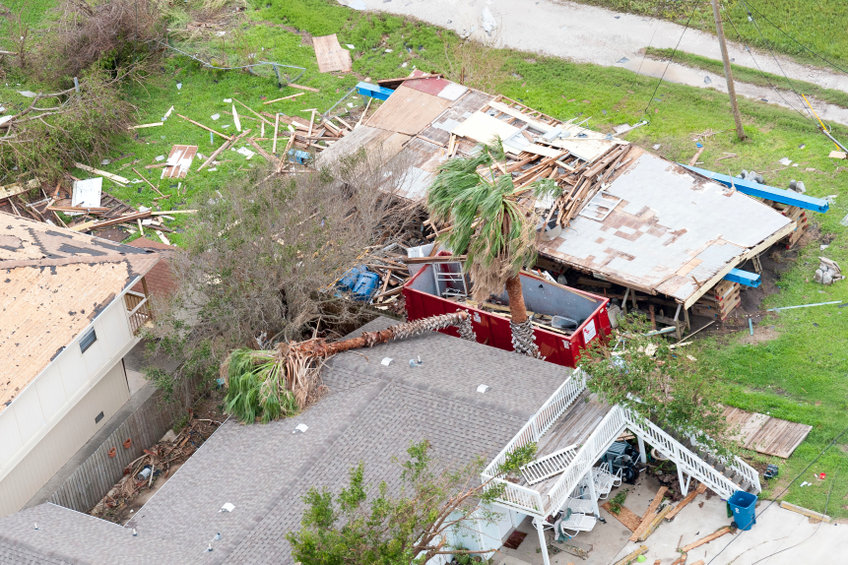
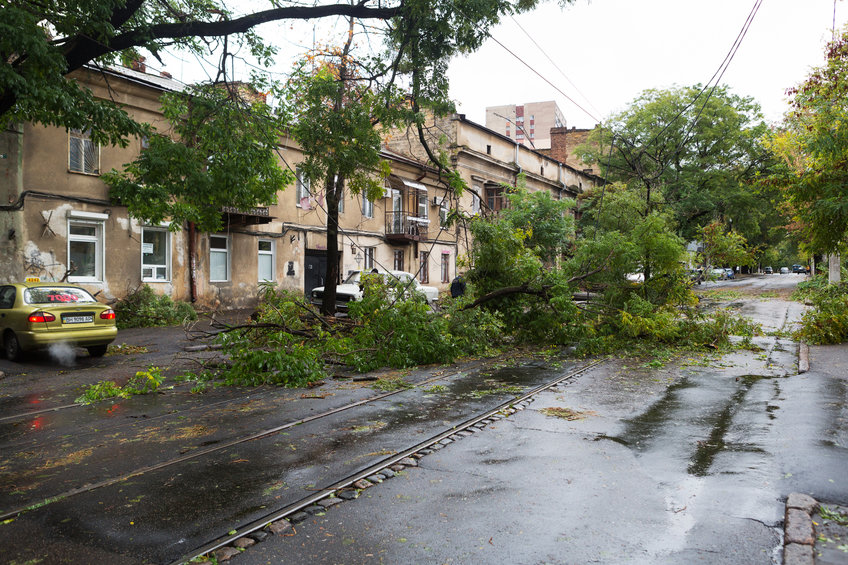
How do smart grids help during a natural disaster like a hurricane or tornado?
During a natural disaster such as a hurricane or tornado, strong winds and the debris that comes with it may easily knock down distribution lines. If there is flooding, the water must recede before substations can be accessed for repairs.[9-13] This could keep hospitals and other critical resources without power until long after the disaster. In the act of a natural disaster, many schools become active emergency shelters for those that need to evacuate an area or have a safe place to stay.[14]
The grid isn’t only vulnerable to natural disasters. Climate change has significantly increased both the frequency and intensity of heatwaves and winter storms.[11-13] These have the potential to melt distribution lines or freeze entire power plants.[13]
In a traditional grid, outages are not made known to the utility company until someone calls it in, and a team must be sent out to diagnose the issue before the right equipment is brought it. With a smart grid, the issue is immediately detected and remotely diagnosed. If available, power may be instantly rerouted, and the affected area will only notice a flicker in power.[6]
Of course, automation and remote controls alone cannot prevent large-scale blackouts during a disaster. Additional reinforcements or “hardening” are required to prevent the physical vulnerability of the grid during a natural disaster.[10, 11, 13] This may include switching from wooden distribution line poles to concrete, redesigning the infrastructure in flood zones, or moving lines underground. The smart grid does, however, reduce the time until the power is restored and provides useful information for future improvements. With the help of statistical modeling and AI, utility companies can use this data to better prepare for upcoming disasters and make decisions on which areas are most in need of hardening.[8, 10, 12, 13]
How is power restored after a storm?
Planning for power restoration begins long before disaster strikes. Electric companies run company-wide drills and make plans with the local government to prepare for different events.[16, 17]
Generally, the first step is to send out a team to assess the damage and ensure no power flows through downed lines. Power plants are the first to be fixed since they will provide power to the rest of the system. Next are transmission lines and substations. Water and wastewater plants are also restored to ensure emergency responders have a clean water supply. Power is then restored to emergency functions, including hospitals, police and fire stations, and communication systems. Once essential needs are met, distribution lines are fixed based on how quickly they can get power to the largest number of people. This includes lines that power whole neighborhoods, industries, or large businesses. Generally, the closer you are to a transmission line, the faster you will get power restored. Individual homes are the last step in power restoration.[16, 17]
Current ways power outages are reduced
Brownouts are a reduction in voltage that lasts for minutes to hours. They can be unintentional, such as during a storm or intentionally produced by utility companies. Voltage is decreased by 10-25%, and most electronics are not affected. In an emergency, a brownout is used to reduce power load and prevent a blackout. A blackout is a complete interruption of power in a given area. Planned outages or rolling blackouts may be implemented by utility companies for maintenance or to reduce stress on the system; however, blackouts are typically caused by natural disasters or catastrophic events.[15]
Energy vs. Power
Energy can be stored or converted into many forms, including kinetic, potential, and electrical. Some units that are used to measure energy are British thermal units (BTU), watt-hours (Wh), and joules (J). An electricity bill typically shows the total energy use by adding up the total kilowatt-hours (kWh) used over the course of a month. When looking at energy bills for different buildings, this value can only be compared if the measurements were taken over the same amount of time. For example, total kWh used over one year.[18]
We can also divide the energy measurement by the period over which it was taken to get a rate of energy usage or power. This can then be directly compared with other power measurements. Power can be measured in watts (W), which is simply 1 Joule per second (J/s), which makes it easier to see that power describes how much energy is used per unit of time. Thinking in terms of distance, energy is comparable to miles traveled, while power is comparable to speed in miles per hour.[18]
References
Artificial Intelligence
[1] Ivey, A. (2023, March 23). 7 artificial intelligence examples in Everyday Life. Cointelegraph. https://cointelegraph.com/news/7-artificial-intelligence-examples-in-everyday-life
[2] Kornowski, R. (2023, February 16). How artificial intelligence – ai – will change the future of Health Care: Opinion. North Jersey Media Group. https://www.northjersey.com/story/opinion/2023/02/10/aiwill-changethe-future-of-health-care/69885537007/
[3] How ai will permanently disrupt the education industry. Gold Penguin. (2023, September 4). https://goldpenguin.org/blog/how-ai-will-permanently-disrupt-the-education-industry/
Smart Grids
[4] Smart Grid: The smart grid. Smart Grid: The Smart Grid | SmartGrid.gov. (2019, December 16). https://smartgrid.gov/the_smart_grid/smart_grid.html
[5] Michaelson, H. (2021, February 24). Smart grids: Updating the traditional grid. Medium. https://medium.com/sjei/smart-grids-updating-the-traditional-grid-7979bed47761#:~:text=The%20traditional%20power%20grid%20moves,of%20energy%20into%20the%20grid.
[6] How the smart grid keeps your power on. What is Smart Energy? (n.d.). https://whatissmartenergy.org/how-the-smart-grid-keeps-your-power-on
[7] Smart Grid and power quality. What is Smart Energy? (n.d.-b). https://whatissmartenergy.org/smart-grid-and-power-quality
[8] Iea. (n.d.). Smart grids. IEA. https://www.iea.org/energy-system/electricity/smart-grids
Smart Grids and Natural Disasters
[9] Public Broadcasting Service. (n.d.). Hurricane Sandy and the limits of the smart grid | inside nova. PBS. https://www.pbs.org/wgbh/nova/insidenova/2012/11/hurricane-sandy-and-the-limits-of-the-smart-grid.html
[10] Author links open overlay panelMuhammad Waseem, & AbstractElectricity grid vulnerabilities can lead to outages with prolonged load interruptions. Research activities on the impact of natural disasters on power system are underway to figure out the outage reasons. (2020, November 3). Electricity Grid Resilience amid various natural disasters: Challenges and solutions. The Electricity Journal. https://www.sciencedirect.com/science/article/pii/S1040619020301561
[11] WP Company. (2021, October 24). Longer, more frequent outages afflict the U.S. power grid as states fail to prepare for climate change. The Washington Post. https://www.washingtonpost.com/business/2021/10/24/climate-change-power-outages/
[12] Sanstad, A. H., Authors, Sanstad, A. H., Larsen, P. H., & Eto, J. H. (n.d.). Case studies of the economic impacts of power interruptions and damage to electricity system infrastructure from extreme events. Case Studies of the Economic Impacts of Power Interruptions and Damage to Electricity System Infrastructure from Extreme Events | Electricity Markets and Policy Group. https://emp.lbl.gov/publications/case-studies-economic-impacts-power
[13] Dhanesha, N. (2021, December 2). The futuristic plan to fix America’s Power Grid. Vox. https://www.vox.com/recode/22812748/storm-hurricane-heatwave-climate-infrastructure-smart-grid-ai
[14] Home. FloridaDisaster.org. (n.d.). https://www.floridadisaster.org/
[15] Understanding brownouts and blackouts: Causes, effects, and solutions. California Commercial Generator Sales, Rental, Maintenance & Service. (2023, March 29). https://www.gotpower.com/brownouts-and-blackouts/
[16] Understanding the electric power industry’s response and restoration … (n.d.). https://www.eei.org/-/media/Project/EEI/Documents/Issues-and-Policy/Reliability-and-Emergency-Response/MA_101.pdf?la=en&hash=ED8AAD4C4C9B2EFA7B6A0A7663A15A6C03C61794
[17] ig.uana.16. (2021, April 15). How the Electric Company restores power after a Storm. Pro Tool Reviews. https://www.protoolreviews.com/how-power-restored-after-storm-order/
Energy vs. Power
[18] ig.uana.16. (2021a, April 15). How the Electric Company restores power after a Storm. Pro Tool Reviews. https://www.protoolreviews.com/how-power-restored-after-storm-order/

